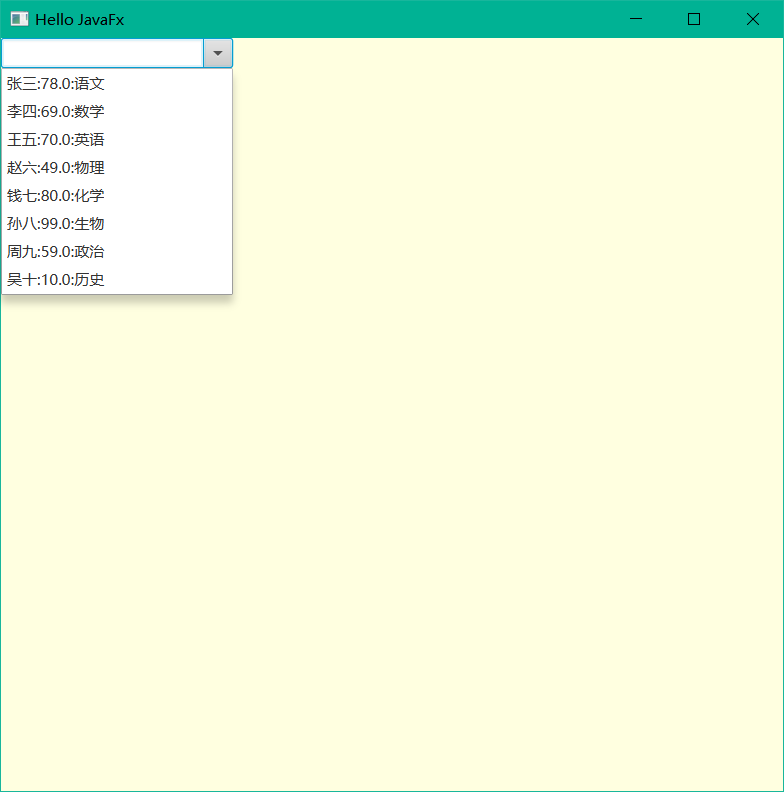ComboBox下拉列表
创建下拉列表
ComboBox<String> comboBox = new ComboBox<>(); comboBox.getItems().addAll("str1","str2","str3","str4","str5");设置可编辑相较于ChoiceBox的特点
comboBox.setEditable(true);设置提示文字
comboBox.setPromptText("请输入");设置占位符
comboBox.setPlaceholder(new Label("无元素"));设置可见行数
comboBox.setVisibleRowCount(3);选项改变监听事件
comboBox.getSelectionModel().selectedItemProperty().addListener((observable, oldValue, newValue) -> { System.out.println(newValue); });单击事件
comboBox.setOnAction(event -> { System.out.println(comboBox.getValue()); });
案例
实体类
class Student { private String name; private double score; private String subject; public Student(String name, double score, String subject) { this.name = name; this.score = score; this.subject = subject; } public Student() { } public String getName() { return name; } public void setName(String name) { this.name = name; } public double getScore() { return score; } public void setScore(double score) { this.score = score; } public String getSubject() { return subject; } public void setSubject(String subject) { this.subject = subject; } @Override public boolean equals(Object o) { if (this == o) return true; if (o == null || getClass() != o.getClass()) return false; Student student = (Student) o; return Double.compare(student.score, score) == 0 && Objects.equals(name, student.name) && Objects.equals(subject, student.subject); } @Override public int hashCode() { return Objects.hash(name, score, subject); } }创建泛型为
Student的下拉列表并初始化一些数据Student student1 = new Student("张三", 78, "语文"); Student student2 = new Student("李四", 69, "数学"); Student student3 = new Student("王五", 70, "英语"); Student student4 = new Student("赵六", 49, "物理"); Student student5 = new Student("钱七", 80, "化学"); Student student6 = new Student("孙八", 99, "生物"); Student student7 = new Student("周九", 59, "政治"); Student student8 = new Student("吴十", 10, "历史"); ComboBox<Student> comboBox = new ComboBox<>(); comboBox.getItems().addAll(student1, student2, student3, student4, student5, student6, student7, student8);数据处理
comboBox.setConverter(new StringConverter<Student>() { @Override public String toString(Student object) { if (object == null) { return ""; } String value = object.getName() + ":" + object.getScore() + ":" + object.getSubject(); return value; } // 在输入框中输入文本按下回车键时,调用此方法 @Override public Student fromString(String string) { // 以:分隔每一项 String[] strings = string.split("[:]"); Student student = new Student(strings[0], Integer.parseInt(strings[1]), strings[2]); return student; } });
